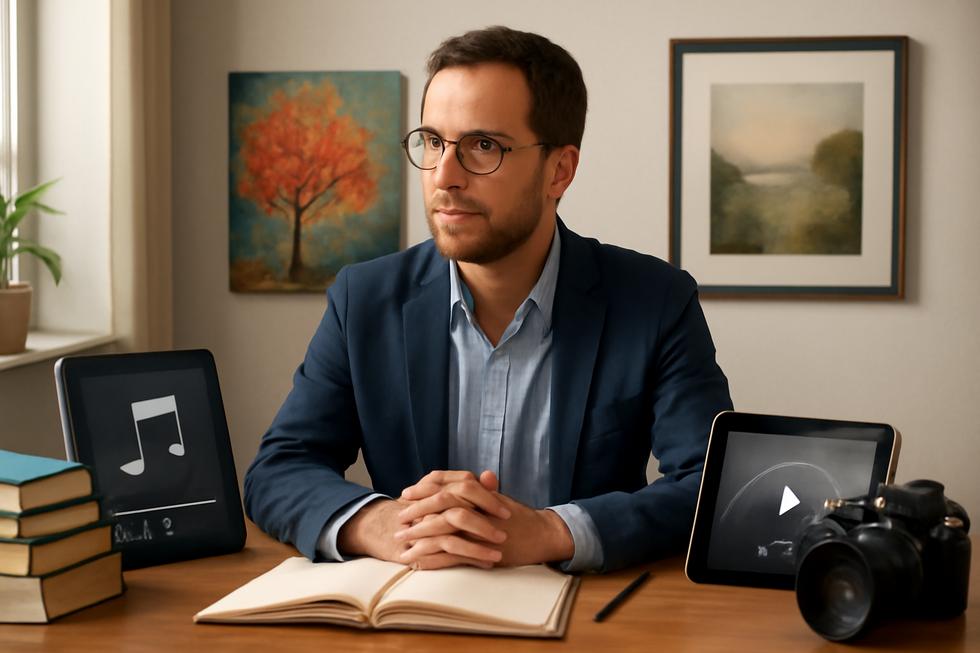Introduction
Copyright plays a pivotal role in safeguarding the creative assets of business owners, ensuring they maintain control over their original works. Recognizing the meaning of copyright, its legal framework, and practical implications is crucial for protecting business innovations and content. This guide unpacks the foundational definition and legal context of copyright, explores the types of works protected, clarifies how long protection lasts and when it applies automatically, and outlines the exclusive rights granted to creators. It further discusses important exceptions like fair use that can affect business operations and concludes by illustrating these principles with a relatable photographer’s example. Together, these chapters equip business owners with a clear understanding needed to navigate copyright confidently and leverage it as a strategic asset.
Tables of Contents
Chapter 1: Copyright Meaning and Example: Definition and Legal Framework
- The Legal Backbone of Copyright: International Treaties and National Laws Shaping Creator Rights
- Navigating Economic and Technological Dynamics in Copyright Protection
- Global and Cultural Impact: Exploring Copyright’s Societal and Geopolitical Landscape
Chapter 2: Copyright Meaning and Example: Scope of Protected Works
- Legal Foundations and Scope of Copyright Protection for Original Creations
- Understanding the Breadth of Copyright Protection: Categories and Criteria That Safeguard Creative Works
- Balancing Creator Rights and Public Access: Duration, Moral Rights, and Public Domain Explained
Chapter 3: Copyright Meaning and Example: Duration and Automatic Protection
- The Core of Automatic Copyright: Originality, Fixation, and Authorship Defined
- How Legal Duration Shapes the Economic Value of Copyright Protection
- How Automatic Copyright Protection Shapes Society and Technology
Chapter 4: Copyright Meaning and Example: Rights Conferred to Creators
- Exclusive Rights Granted by Copyright: Empowering Creators’ Control Over Their Works
- Economic Incentives and Market Influence of Copyright Protection
- The Impact of Copyright on Society and the Legal Landscape for Creators
Chapter 5: Copyright Meaning and Example: Exceptions and Limitations such as Fair Use
- Navigating Copyright’s Core Rights and the Balancing Role of Fair Use Exceptions
- Understanding Fair Use: Balancing Creative Rights and Public Interest in Copyright Law
- Balancing Protection and Access: Key Doctrinal Limits Shaping Copyright Scope
Chapter 6: Copyright Meaning and Example: Practical Illustration with a Photographer’s Example
- Understanding Photographers’ Legal Rights and Copyright Protections in Creative Works
- Navigating Derivative Works and Copyright Infringement Risks in Photography-Based Art
- Guarding Creativity in Photography: Understanding Permissions and Originality Under Copyright
Chapter 1: Copyright Meaning and Example: Definition and Legal Framework
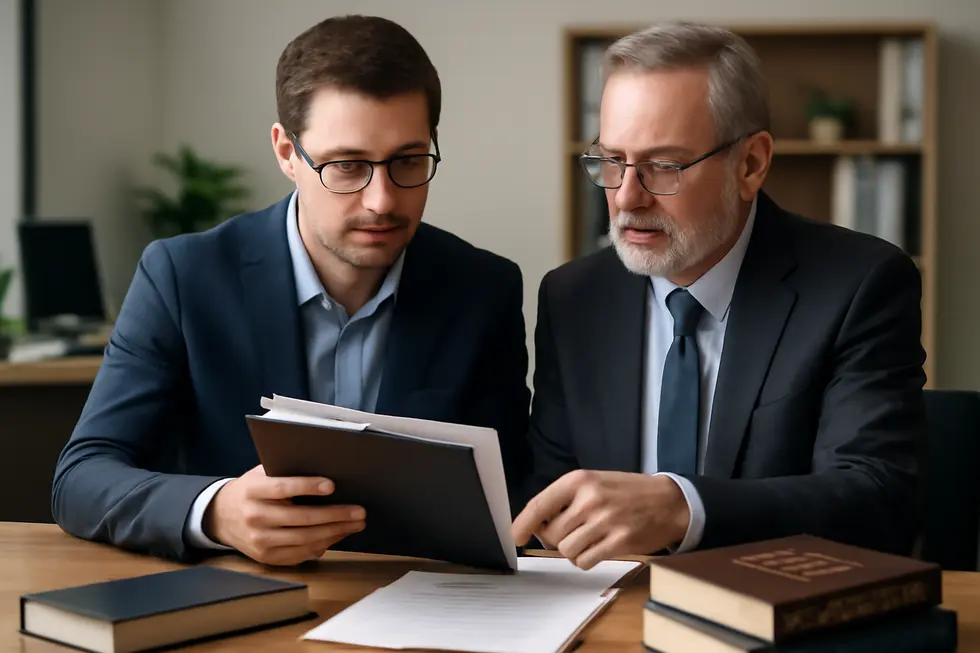
1. The Legal Backbone of Copyright: International Treaties and National Laws Shaping Creator Rights
Copyright legally grants creators exclusive control over their original works, covering literature, music, art, films, photos, software, and architecture. These rights arise automatically upon creation and last for a limited time, fostering innovation while balancing public access. Fundamentally, copyright acts as a negative right, prohibiting unauthorized use rather than granting permission outright. This creates a temporary monopoly for the creator, who can license or transfer their rights to others, ensuring both moral and economic protection.
On the international stage, copyright is harmonized through treaties like the Berne Convention, which establishes minimum protections that member countries must follow. National laws then adapt these standards to local contexts. For instance, India’s Copyright Act of 1957 defines protected works and regulates licensing, enabling creators to allow limited use without transferring ownership. Similarly, the United Kingdom’s laws protect a broad range of original works and restrict unauthorized copying or performance.
Together, international agreements and national legislations form a cohesive legal foundation that upholds creators’ rights worldwide. For further insights on copyright licensing agreements in India, see The Legal School.
2. Navigating Economic and Technological Dynamics in Copyright Protection
Copyright establishes a temporary exclusive right for creators over their original works, generating a legal and economic framework that balances incentives and public access. Economically, copyright functions as a negative right, forbidding others from unauthorized reproduction or distribution. This creates a controlled market space where creators can monetize their work through licensing or sales, encouraging innovation and cultural growth. For example, an author holding copyright on a novel can authorize its reproduction, adaptation, or sale to maximize economic returns while preventing illicit copying.
Technological advances, especially digital media and the internet, have complicated this landscape. Laws have adapted to encompass digital reproduction and communication, addressing challenges such as online sharing and copying. Legislation like the UK’s Copyright, Designs and Patents Act 1988 reflects these changes, while international treaties coordinate protections globally. This evolving framework ensures creators’ rights remain robust amid technological shifts without stifling accessibility.
This balance between economic rights and technological realities fosters a sustainable creative ecosystem, underscoring why copyright is vital in protecting and motivating original expression. For deeper business-related insights, explore characteristics of copyright for business.
External Reference: https://subjectguides.york.ac.uk/copyright/law
3. Global and Cultural Impact: Exploring Copyright’s Societal and Geopolitical Landscape
Copyright protects creators by granting exclusive rights over original works like literature, music, art, and films. However, the application and interpretation of these rights vary significantly across societies and nations. From a societal viewpoint, copyright must balance creators’ economic and moral interests with public access to knowledge and culture. Cultural norms shape what is deemed fair use or acceptable adaptation, influencing law enforcement and compliance. Geopolitically, copyright frameworks differ due to diverse legal traditions and political priorities. International treaties such as the Berne Convention strive to harmonize these laws while allowing countries to maintain sovereignty over enforcement and exceptions. For instance, a musician’s exclusive rights to distribute a song may be licensed differently in the US compared to the EU because of territorial restrictions derived from geopolitical realities. This dynamic legal environment ensures creative works are protected while respecting varying societal values worldwide. To delve deeper into copyright’s legal scope and exceptions, see more on copyright law and public domain. External reference: WIPO (https://www.wipo.int/).
Chapter 2: Copyright Meaning and Example: Scope of Protected Works
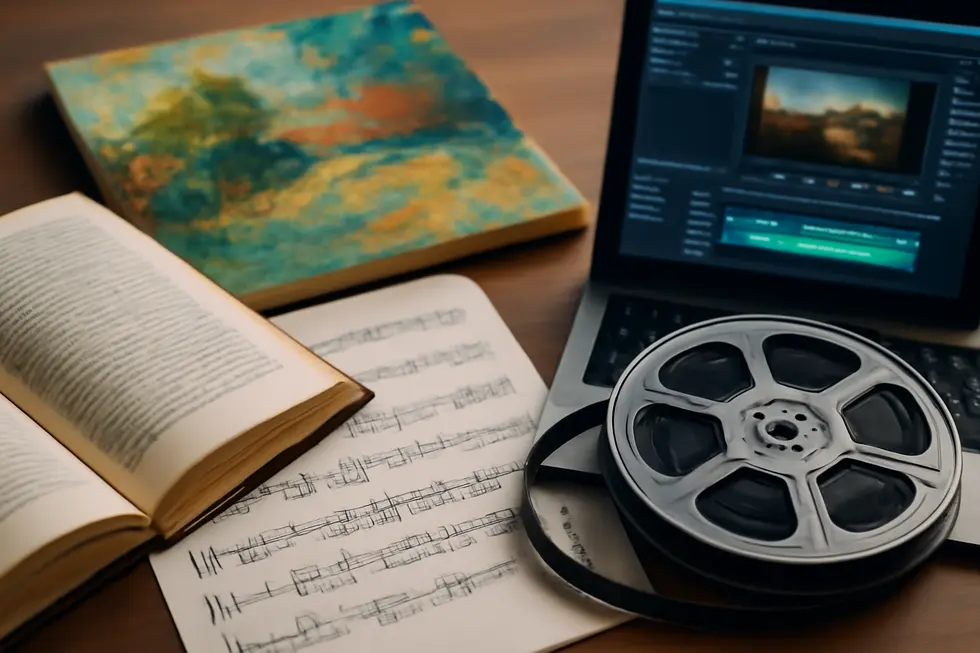
1. Legal Foundations and Scope of Copyright Protection for Original Creations
Copyright grants creators exclusive legal rights to control their original works fixed in a tangible form. This protection covers a wide variety of creative outputs, including literary texts such as novels, musical compositions, films, software code, photographs, and artwork. Once an original work is created and recorded in some perceptible form, copyright protection arises automatically—registration is not required. The law empowers creators to authorize or restrict copying, distribution, adaptation, and public performance of their works for a limited time, typically lasting for the life of the author plus 70 years. This balance encourages innovation by rewarding creators economically and morally while eventually enriching the public domain. Importantly, copyright protects the expression of ideas, not the ideas themselves, allowing others to build upon concepts without copying the exact form. Exceptions like fair use permit limited reuse for education or research, ensuring accessibility without undermining creators’ rights. For a deeper understanding of how copyright works in business contexts, explore copyright definition for business owners. For more detailed guidance, visit Indiana University Libraries’ copyright guide.
2. Understanding the Breadth of Copyright Protection: Categories and Criteria That Safeguard Creative Works
Copyright protection applies to a diverse array of original works fixed in tangible form. To be eligible, a work must demonstrate originality—meaning it is independently created with a minimal level of creativity—and fixation, where the expression is recorded in a medium perceptible or reproducible. This protection covers literary creations like novels and poems, musical compositions both with and without lyrics, dramatic scripts, and artistic expressions such as paintings and photographs. In addition, audiovisual materials including films and digital videos gain copyright coverage, as do sound recordings distinct from musical works themselves. Even software code and mobile applications are protected under the literary category, while architectural designs and blueprints qualify as artistic works. These rights empower creators to control reproduction, distribution, public display or performance, and adaptations of their work for a limited duration—often extending to the author’s life plus 70 years. Beyond mere copying, copyright also covers derivative works such as dramatizations or film adaptations. This comprehensive scope ensures creators’ efforts receive legal recognition, fostering ongoing innovation across cultural and technological domains. For detailed exemplifications of these categories and criteria, LegalZoom offers a clear overview of foundational copyright principles.1
3. Balancing Creator Rights and Public Access: Duration, Moral Rights, and Public Domain Explained
Copyright grants creators exclusive control to reproduce, distribute, and adapt their works, but these rights are bounded by important limitations. A key limit is duration: copyright usually lasts for the author’s life plus 70 years, after which the work enters the public domain, free for anyone to use without permission. For instance, Shakespeare’s plays are public domain, yet new annotated editions hold their own copyrights. Another vital concept is moral rights, which protect the personal connection between author and work. This includes the right to attribution, anonymity, or preventing harmful alterations. These rights differ globally—some countries maintain them indefinitely, while others limit their scope or duration. The public domain encourages cultural growth by enabling free access to expired or unrestricted works. Still, copyright exceptions like fair use permit limited use for purposes such as education, criticism, or news reporting without licensing. For example, a journalist quoting a copyrighted report may rely on fair use. This framework thoughtfully balances creators’ protections with public interest and cultural development. Learn more about the nuances of copyright and public domain here. For an in-depth legal guide, see the University of Regina’s copyright basics.
Chapter 3: Copyright Meaning and Example: Duration and Automatic Protection

1. The Core of Automatic Copyright: Originality, Fixation, and Authorship Defined
Copyright protection arises automatically the moment an original work is fixed in a tangible medium by its author. This foundational principle means no formal registration or publication is required. The work must be original, which the law interprets as independently created with at least minimal creativity—mere facts or ideas without expression do not qualify. Fixation requires the work to be captured in a physical or digital form perceptible to others, such as writing, recordings, or digital files. Moreover, copyright protects only works created by human authorship, emphasizing the personal creative contribution behind the expression. Together, these elements ensure that a book, song, photograph, or software code enjoys exclusive legal rights without procedural hurdles. This automatic protection incentivizes creativity by giving authors control over reproduction, distribution, or adaptation of their fixed works. Understanding these pillars clarifies why copyright safeguards the specific form of creative expression rather than abstract ideas. For more insight into how copyright applies to various types of works, including literary and artistic creations, see detailed discussions on copyright definition for business owners. Furthermore, the U.S. Supreme Court’s ruling in Feist Publications v. Rural Telephone Service (1991) affirmed these standards by emphasizing that originality involves more than trivial variation, requiring at least minimal creativity.
2. How Legal Duration Shapes the Economic Value of Copyright Protection
Copyright grants creators exclusive rights to control and profit from their original works fixed in a tangible form—whether literature, music, or art. This protection exists for a limited legal duration, which is typically the life of the author plus 70 years for most works created after 1978. For anonymous works or those made for hire, copyright lasts either 95 years from publication or 120 years from creation, whichever ends first. These time frames ensure creators and their heirs can commercially exploit their works, licensing or selling them to generate income over decades.
This extended protection incentivizes continuous creative innovation by safeguarding creators’ investments against unauthorized use and piracy. It fosters a fair economic environment while balancing eventual public access, as copyrighted works enter the public domain after these terms expire. By controlling reproduction, distribution, and public performance rights, copyright shapes how cultural and commercial value flows between creators, users, and society.
For more insights on copyright’s foundational economic role, see copyright definition economics business. Additional detailed duration information is available at Indiana University’s comprehensive guide: https://guides.libraries.indiana.edu/copyright
3. How Automatic Copyright Protection Shapes Society and Technology
Copyright grants creators exclusive, automatic rights over their original works fixed in a tangible form. This legal monopoly allows control over reproduction, distribution, performance, and adaptation without needing formal registration, although registration can strengthen enforcement. While protecting the specific expression of ideas—such as the text of a novel or images in a photograph—copyright does not cover the underlying ideas themselves.
This automatic protection fosters creativity by providing economic incentives, enabling creators to monetize their efforts while encouraging cultural growth through controlled sharing. Importantly, copyright balances individual rights with public interest by allowing exceptions, like fair use, which permits limited use without authorization for education or commentary.
Technological advances heighten these dynamics, as digital content can be copied and shared instantly. While automatic copyright safeguards creators’ control online, this ease of distribution challenges enforcement. Despite complexities, the framework supports creative progress and public benefit by carefully calibrating exclusive rights and necessary limitations.
For a deeper understanding of how copyright supports cultural advancement and legal nuances, see copyright in the public domain.
Chapter 4: Copyright Meaning and Example: Rights Conferred to Creators
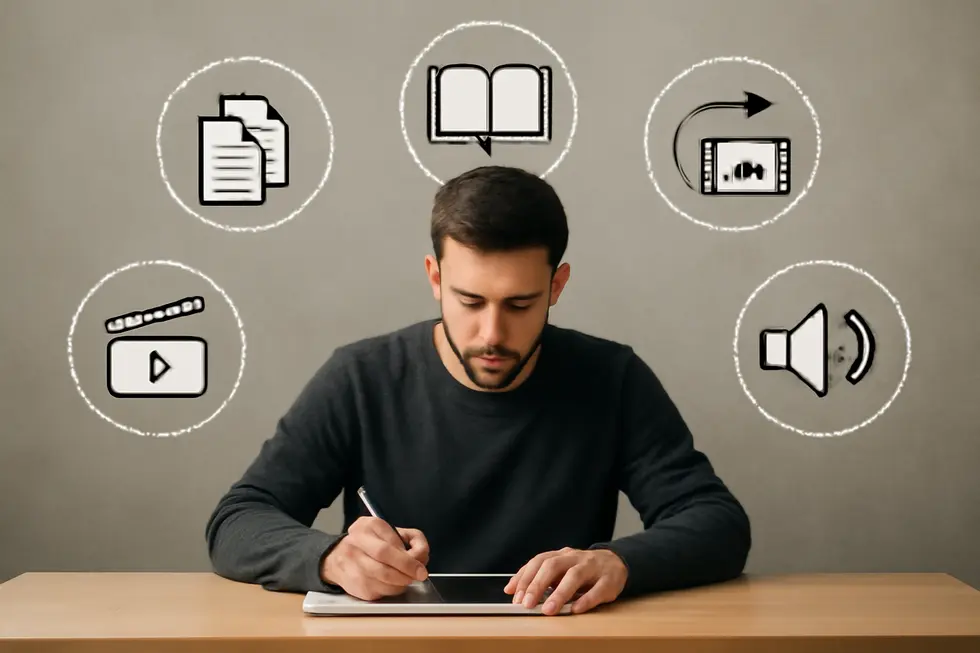
1. Exclusive Rights Granted by Copyright: Empowering Creators’ Control Over Their Works
Exclusive Control Through Copyright: What Creators Gain
Copyright grants creators a bundle of exclusive rights that empower them to govern how their original works are used. Once a work is fixed in a tangible medium—from novels and music to films and photographs—copyright law automatically protects it. This protection gives creators the sole authority to reproduce their work, distribute copies, perform or display it publicly, and produce derivative works such as adaptations or translations. The right to authorize others to undertake these actions is also exclusively reserved for the copyright holder.
For instance, a novelist holding copyright can control the publication, adaptation into a screenplay, or sale of their book. Any reproduction or public use without permission typically constitutes infringement, unless a legal exception like fair use applies. Importantly, copyright protects the unique expression, not the underlying ideas or facts, maintaining a balance that encourages innovation across creative fields.
This system ensures creators can benefit economically while eventually contributing to the public domain. To explore how copyright shapes content distribution and ownership in business, see this detailed guide on copyright distribution rights in business.
For more legal context, consult the authoritative guide from the University of Portland on ethical info use: https://up.edu/library/copyright-and-fair-use/
2. Economic Incentives and Market Influence of Copyright Protection
Copyright grants creators exclusive control over reproducing, publishing, and distributing their original works, which directly fuels economic activity within creative industries. By securing the right to monetize literary, musical, artistic, and digital creations, copyright establishes vital financial incentives for authors, artists, and developers. These exclusive rights allow creators to generate income through sales, licensing agreements, and royalties, helping them recoup investments and fund future projects. For instance, a novelist can license foreign publishing rights, while a software developer can commercialize a program, both benefiting from protection against unauthorized copying or piracy. This temporary monopoly not only safeguards creators’ revenues but also ensures quality and innovation by controlling modifications and distribution. Consequently, copyright protection stimulates economic growth by fostering a dynamic marketplace rich in new creative content. Protecting intellectual property encourages continuous innovation and sustains jobs in cultural and technological sectors. For further insight into copyright’s economic role, see the analysis of copyright benefits and consult Merriam-Webster’s detailed definition and examples.
3. The Impact of Copyright on Society and the Legal Landscape for Creators
Copyright grants creators exclusive control over their original works, allowing them to reproduce, distribute, perform, or adapt these creations within a limited timeframe. This legal protection incentivizes innovation by enabling creators to derive financial and moral benefits from their efforts, while the limited term ensures these works eventually enrich the public domain. Importantly, copyright safeguards the unique expression of ideas fixed in tangible form—not the underlying ideas themselves—thus preserving a balance between protecting creativity and fostering cultural growth. For instance, an author owns exclusive rights to a novel’s text but not to general plot themes. Legal enforcement mechanisms empower creators to prevent unauthorized use, yet exceptions like fair use maintain access to knowledge and creativity. Ultimately, copyright shapes how society values and shares intellectual works, encouraging progress while ensuring that innovation serves the greater public interest. For deeper insights into how copyright influences business practices, see copyright distribution rights for businesses.
More detailed legal perspectives can be found at Merriam-Webster’s definition of copyright: https://www.merriam-webster.com/dictionary/copyright
Chapter 5: Copyright Meaning and Example: Exceptions and Limitations such as Fair Use
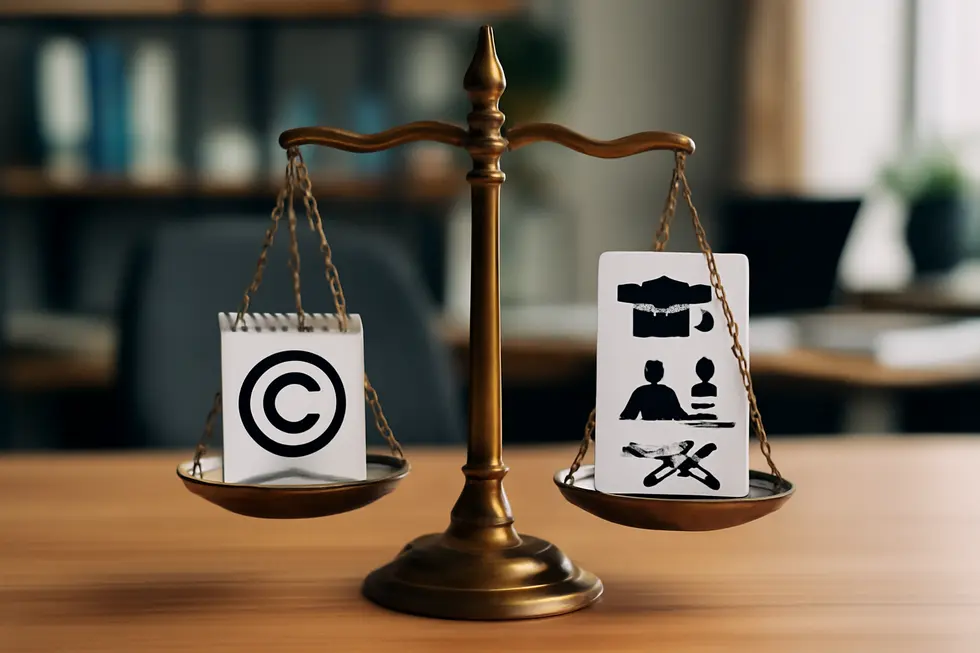
1. Navigating Copyright’s Core Rights and the Balancing Role of Fair Use Exceptions
Copyright grants creators exclusive control over their original works fixed in tangible form, covering rights to reproduce, distribute, adapt, publicly display, and perform their creations. These protections apply automatically without registration and last for a legally defined period. However, copyright law carefully balances creators’ interests with public access by incorporating exceptions and limitations, most notably fair use (in the U.S.) or fair dealing (in other jurisdictions). These exceptions permit limited use without permission under specific contexts such as education, commentary, criticism, parody, or news reporting.
Courts evaluate fair use based on factors like the purpose of use (commercial or educational), the nature and amount of the work used, and the effect on the original market. For instance, a teacher copying brief book excerpts for classroom use or quoting short passages in academic writing typically qualifies as fair use, promoting knowledge dissemination without undermining creators’ rights. This framework ensures creators gain economic benefit while society retains access to culture and ideas.
For further details on how limitations balance copyright protections, see copyright information example for business and consult authoritative legal resources such as the U.S. Copyright Office.
2. Understanding Fair Use: Balancing Creative Rights and Public Interest in Copyright Law
Fair use is a crucial doctrine within copyright law that permits limited use of copyrighted works without the owner’s permission under specific conditions. It promotes freedom of expression and access to information by allowing uses for criticism, commentary, news reporting, teaching, scholarship, research, and parody. The U.S. Copyright Act (Section 107) establishes four factors to evaluate fair use: the purpose and character of the use—favoring nonprofit or transformative activities; the nature of the copyrighted work—with factual material more likely fair; the amount used—including whether the “heart” of the work was taken; and the effect on the work’s market value, assessing potential economic harm. For instance, a journalist may quote from copyrighted documents to expose wrongdoing, relying on fair use to support public interest and free speech. This flexible, context-dependent defense carefully balances protecting creators’ rights with societal benefits, allowing important educational and expressive uses while preventing exploitation. For more insights on copyright exceptions in publishing, see copyright information for books. Additional case examples and guidance can be found at the U.S. Copyright Office Fair Use Index.
3. Balancing Protection and Access: Key Doctrinal Limits Shaping Copyright Scope
Copyright law carefully balances granting creators rights with preserving access to ideas and common creative elements. Fundamental to this balance are doctrinal limitations like the Idea/Expression Distinction, Scènes à Faire, and the Merger Doctrine, which define what copyright can protect. The Idea/Expression Distinction ensures only the unique expression—not the underlying idea or concept—is protected, so general themes or facts remain free for all to use. Similarly, the Scènes à Faire doctrine excludes stock elements that are standard or inevitable in a genre, such as common plot points in romance stories or typical photographic angles, preventing monopolies on conventional building blocks. Meanwhile, the Merger Doctrine applies when an idea can be expressed in only one or a limited number of ways, merging idea and expression; for example, a factual statement like a birthdate cannot be copyrighted. These doctrines prevent copyright from overreaching, encourage creativity without restricting fundamental knowledge, and work alongside exceptions like Fair Use to allow limited, lawful use. Understanding these doctrinal boundaries clarifies copyright’s role in protecting originality while preserving public domain essentials. For further details on these legal principles, see key doctrinal discussions here.
Chapter 6: Copyright Meaning and Example: Practical Illustration with a Photographer’s Example
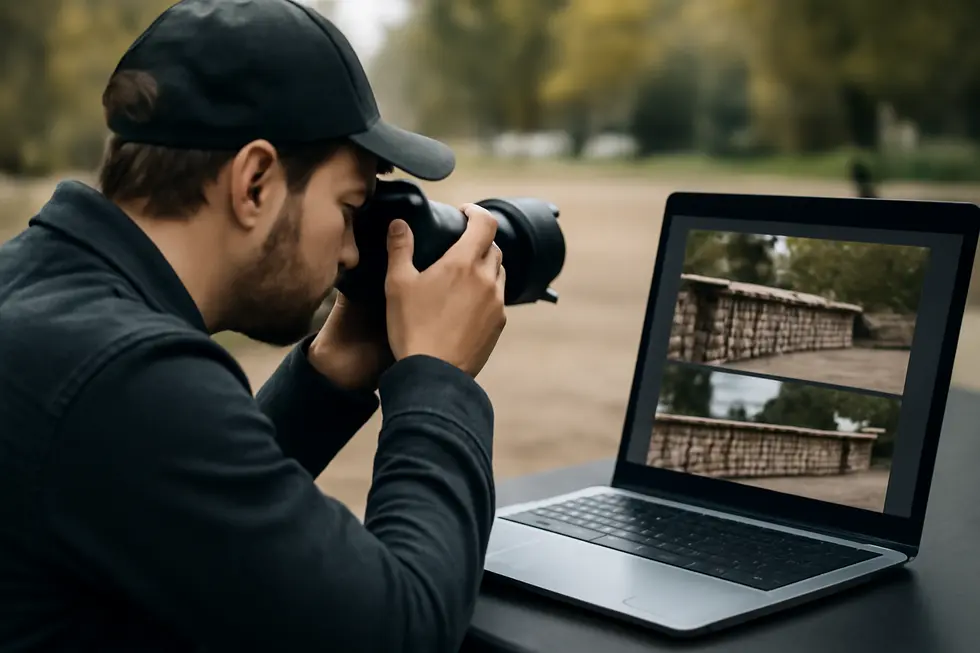
1. Understanding Photographers’ Legal Rights and Copyright Protections in Creative Works
Copyright grants photographers automatic legal protection over their original images the moment they capture them. Without any formal registration, these creators gain exclusive rights to reproduce, distribute, and display their photos. For instance, a photographer may display a clear copyright notice such as “© 2025 Jane Doe Photography. All rights reserved.” on their website or image files. This signals to others that permission is required before anyone can use or reproduce the photos. Photographers also maintain control over derivative works—if another artist creates a drawing based on a photo, they usually need the photographer’s consent since two separate copyrights may apply. Beyond protection, photographers can license their works under specific terms, like Creative Commons, allowing controlled sharing while retaining rights. This balance encourages respect for original content and clarifies usage boundaries. For further insights on copyright’s scope and protected rights, refer to copyright definition economics business. This legal framework empowers photographers to safeguard their creative efforts effectively while enabling lawful use by others.
2. Navigating Derivative Works and Copyright Infringement Risks in Photography-Based Art
Copyright grants photographers exclusive rights over their original images from the moment of creation. For instance, when John Smith photographs a scene in 2023, he automatically owns that work’s copyright, enabling him to control reproduction and distribution, often marked with a notice like © 2023 John Smith Photography. Beyond the original photo, copyright also safeguards derivative works—new creations based on the original image. If another artist paints or draws closely resembling John’s photograph without permission, this derivative art may infringe on his exclusive rights. Even if the painting adds original elements, unauthorized reproduction of core protected features such as pose or composition constitutes a legal risk. To avoid infringement, artists must secure licenses or use images from the public domain or under permissive Creative Commons licenses. Transformative artwork that significantly alters the original may also avoid violation but requires careful legal consideration. This balance ensures photographers retain control over their works while guiding artists in respecting copyright boundaries. For detailed insights on copyright scope and protections, see copyright distribution rights.
More on derivative works and infringement risks can be found at US Copyright Office.
3. Guarding Creativity in Photography: Understanding Permissions and Originality Under Copyright
Copyright grants photographers exclusive control over their images, allowing them to determine how their works are used. When a photographer posts an original photo online accompanied by a clear copyright notice, it signals that anyone wishing to reuse the image must first obtain permission. This legal safeguard extends beyond exact copies; derivative works like paintings closely based on the photograph may also infringe copyright if they replicate distinctive elements without consent. To protect their rights, photographers often watermark images or include explicit licensing terms outlining acceptable uses. Licensing—whether exclusive or under frameworks like Creative Commons—enables controlled sharing while preserving creator rights. Should unauthorized use occur, photographers can pursue enforcement through takedown requests or legal action to uphold their intellectual property. Understanding these protections is essential not only for creators but also for artists who incorporate photographic works, ensuring respect for originality and preventing infringement risks. This nuanced balance fosters a creative environment where photographers’ rights and artistic inspiration coexist responsibly. For further insights on how copyright influences distribution, see more on copyright distribution rights.
Final thoughts
Understanding copyright meaning and examples is essential for business owners aiming to protect their creative outputs and intellectual property. Copyright provides exclusive rights that let creators control how their work is used, published, or adapted—ensuring their innovations and content have tangible business value. Recognizing the types of works protected, the automatic nature and duration of protection, and the scope of creator rights empowers businesses to confidently safeguard their assets. Additionally, being aware of exceptions like fair use enables businesses to operate flexibly within legal boundaries. By viewing copyright through the practical lens of a photographer’s example, business owners can see the concrete benefits of proper protection in everyday scenarios. Ultimately, integrating copyright knowledge into your business strategy helps you capitalize on your creative investments and avoid costly legal pitfalls.
Your IP is the foundation of your success – let’s protect it together before it’s too late. We can’t wait to help you turn your ideas into legally secured assets.
About us
undefined
